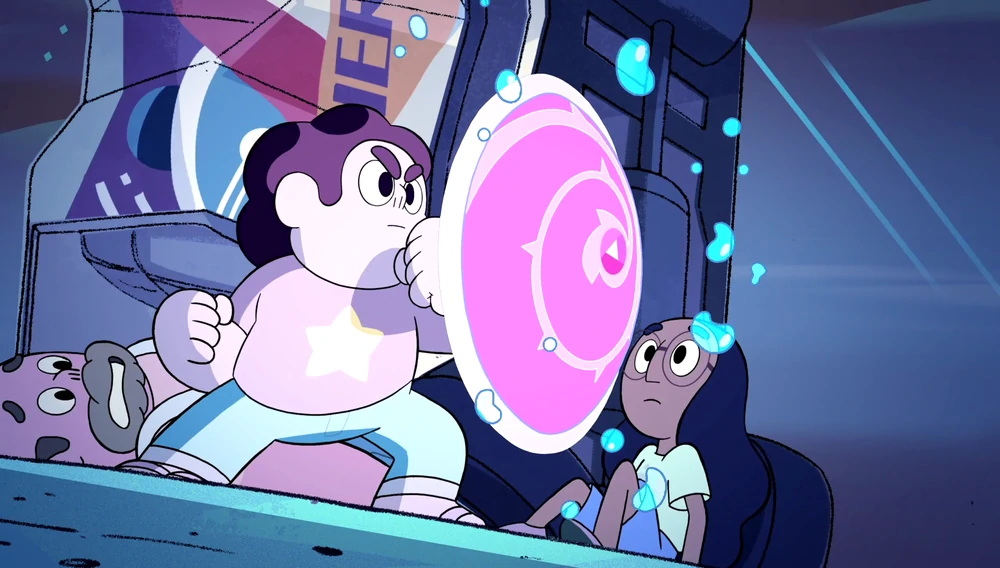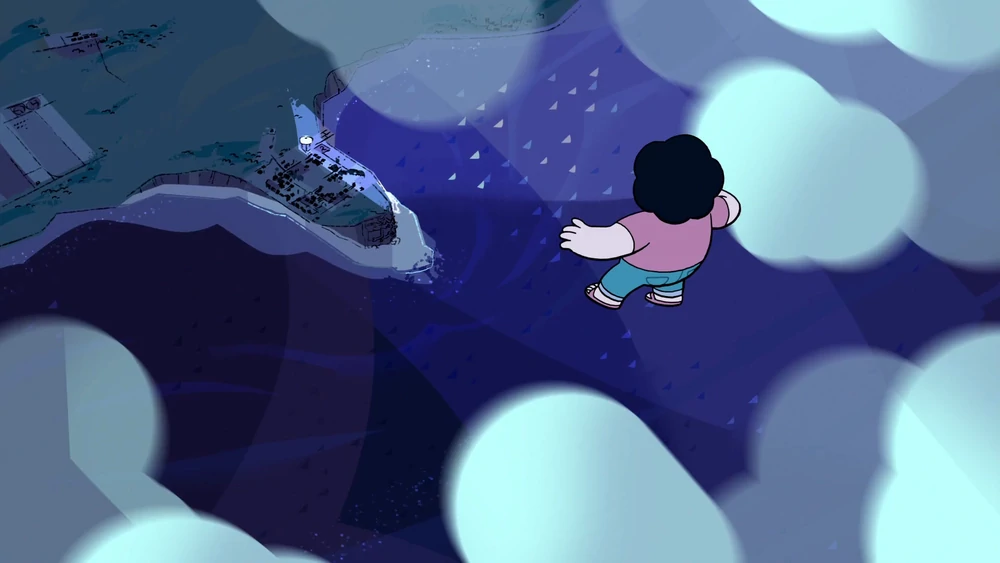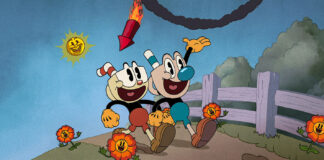Over the past decade, many cartoons have aired that change the way we think about children’s TV: Gravity Falls, Regular Show, Adventure Time, and Amphibia (see our review) among many more. Boundaries were pushed and new ground was laid for stronger, more thoughtful entertainment for children to enjoy. However, the undisputed leader in this call for change was the surprising success of Steven Universe.
Created by Rebecca Sugar in 2013, many consider Steven Universe a pioneer in children’s storytelling, especially in its discussion of social issues like sexuality and gender. To see a light-hearted kids show being so bold in its themes was unheard of at the time, especially on a channel as large as Cartoon Network. It’s art and sound were unique, its story was creative, and its ingenuity was unprecedented, leading to a wave of content that’s outlasted almost every other show of its time.
But now that almost two years have passed since its conclusion, just how well does it hold up? Is it really the masterpiece many remember it as, or was its success overblown? After examining it for myself, it’s clear that the truth lays somewhere in the middle. There are undeniable issues with the show’s pacing and plot writing, as well as often irresponsible depictions of character morality. However, by pairing this with lovable characters, impeccable music and sound design, and inventive storytelling methods, Steven Universe has cemented itself as a cartoon that all should try, even if they don’t finish.

At its most basic, Steven Universe is the story of the Crystal Gems, a group of humanoid aliens who battle against monsters that threaten Earth. As the youngest among them, the goofy and naïve half-human Steven must learn the skills necessary to protect his home and family, and along the way discover the truth behind himself, the Gems, and the vast universe they’re involved in.
As a premise, this is very strong. Learning more about each Crystal Gem is a joy, from the loving yet stoic Garnet to the wild and carefree Amethyst. The rules that govern them as an alien species are unique and interesting, and learning the lore behind each of their abilities is especially enjoyable. It feels like an event whenever Steven uncovers a new gem power or learns something new about his heritage, and watching his skills grow as the episodes continue adds a sense of continuity the series otherwise lacks (especially in the first season).
Eventually, this progression leads to one of the show’s best ideas: fusion. When two gems perform a special dance and become in-sync, their body’s fuse together into a new gem representative of their relationship. This is a key concept in terms of both storytelling and spectacle, and seeing how characters blend together adds a special layer of enjoyment to any episode they’re involved in. Two characters may have spent the previous episodes arguing, but when they finally make up, their reunion may be capped off with the reveal of a brand new fusion, a perfect representation of the development in their relationship. This type of writing leads to some of the series’ best moments, and the amount it adds to the story as a whole cannot be understated.

But at the same time, fusion also leads to one of the shows greatest issues: it’s theming. As an allegory for the relationship between two people, fusion is often used to represent romantic feelings. In some cases, this is great, such as the fusion between the characters Ruby and Sapphire being used to represent their non-standard relationship. But in some cases, such as when fusion is used to discuss abuse and objectification, the writing fails to understand the implications of what it has done. As an example, even after the character Lapis forces her partner into an abusive fusion and heavily implies that she enjoyed taking her anger out on them, she is still treated as a victim whose actions are justified by her own trauma, while her abused partner is painted as a villain.
This problem is also present beyond the topic of fusion. The series main villains, the sudo-fascist dictators ‘The Diamonds,’ are portrayed for most of the show as undeniably horrible to the millions of gems within their empire. But when the time comes to confront them, the show decides to redeem them anyways, as if their heinous crimes simply faded away. This type of disregard for the implications of a work is downright irresponsible for a show aimed toward children, and there are several other cases of it that I don’t have time to mention.
But in all honesty, these issues are easy to overlook with a show that looks and sounds like Steven Universe. The art is stylized and colorful while still able to depict a variety of scenes. Wacky facial expressions and exaggerated movements are used liberally to sell comedic moments, but when things get more serious, it can switch seamlessly to fit the new tone. At times, there were some very obtrusive errors when it comes to character sizing and proportions, but when everything is in motion, these are rarely noticeable.
However, the real star of the show in undoubtedly the soundtrack. From the iconic opening theme to the simple motifs used for each character, music plays a huge part in engrossing the viewer in the setting and tone. When Steven accidentally brings an army of watermelons to life, a light and cheery melody is used that repeats when they reappear later in the series, and when characters need to get particularly emotional, they often break out into song. This easily could have been botched, so to see that they were able to balance it so well over the run of the show is an absolute achievement.
Accompanying this is a solid cast of voice actors that do a great job emphasizing the unique qualities of their characters. Special mention goes to Zach Callison as Steven and Shelby Rabara as Peridot; I can’t imagine these characters voiced by anyone else.

Beyond theming issues, the show frequently struggles to keep itself in line with the interesting main plot, wasting its potential by dedicating entire episodes to characters that are unimportant at best, and unappealing at worst. The world may be faced with imminent danger, but that doesn’t stop Steven from spending several episodes bumming around town doing nothing of importance. In isolation, I actually don’t consider most of these episodes to be poorly made, but their subpar plot writing and pace-breaking nature makes them irritating to watch.
Out of the 160 episodes that make up the core series, there are roughly 40 that I consider unnecessary to watch, and I would advise anyone without the time to sit through everything to consult a filler guide. It’s that pervasive.
Verdict
Clearly, Steven Universe is a show of ups and downs. At it’s best, it presents some of the most enjoyable content that Cartoon Network has ever made, but it often stifles itself with awful structure and writing decisions. When I watch some of the series’ lesser episodes, I find myself wondering why I enjoy the show at all, but when everything comes together and the show truly shines, the opposite is also true. Under more experienced supervision, I believe it could have been something truly extraordinary, but sadly, that isn’t what we were left with.
In its current state, Steven Universe isn’t a show that children should watch; its inconsistent pacing and irresponsible moral implications make that an easy choice. But for anyone else looking for their next favorite show, I can’t say I didn’t enjoy myself. It may be sporadic, unpolished, and morally bankrupt, but if you can get past all that, it provides an experience you won’t find anywhere else.


Well said Cole! This review was so insightful and most definitely useful. Thank you for the inside scoop on Steven Universe- it was most helpful👏🏼